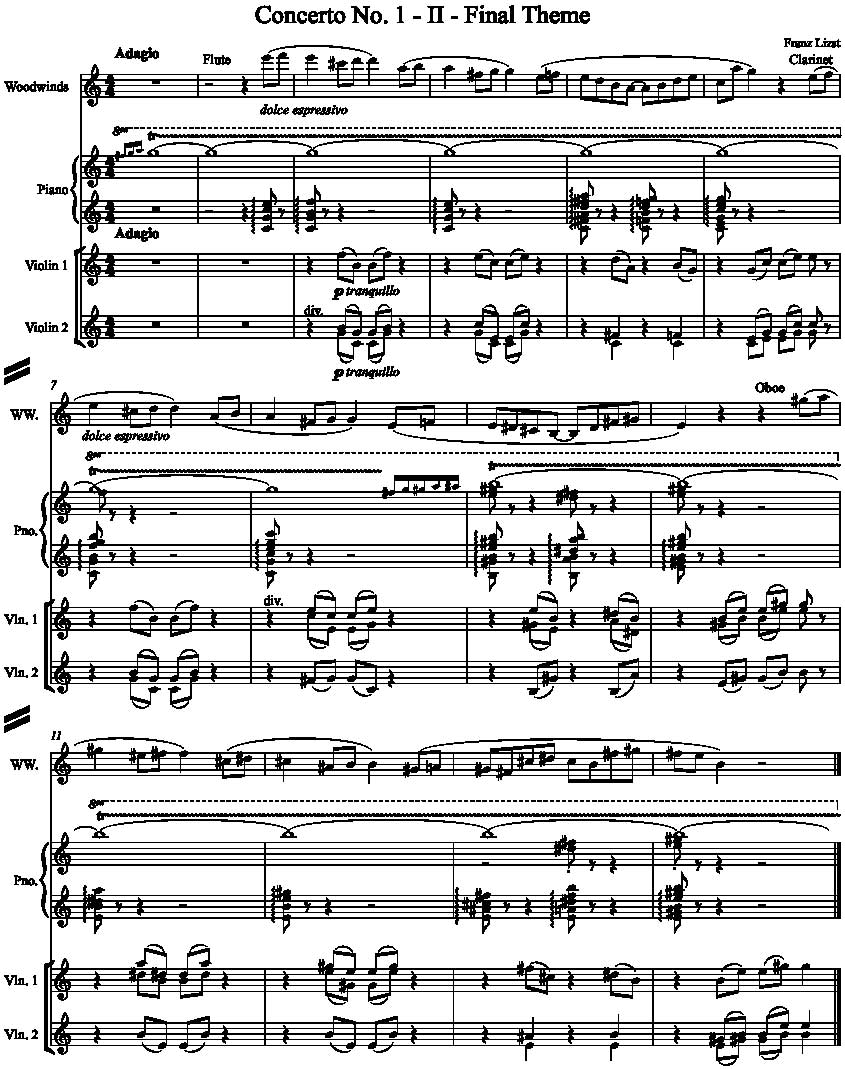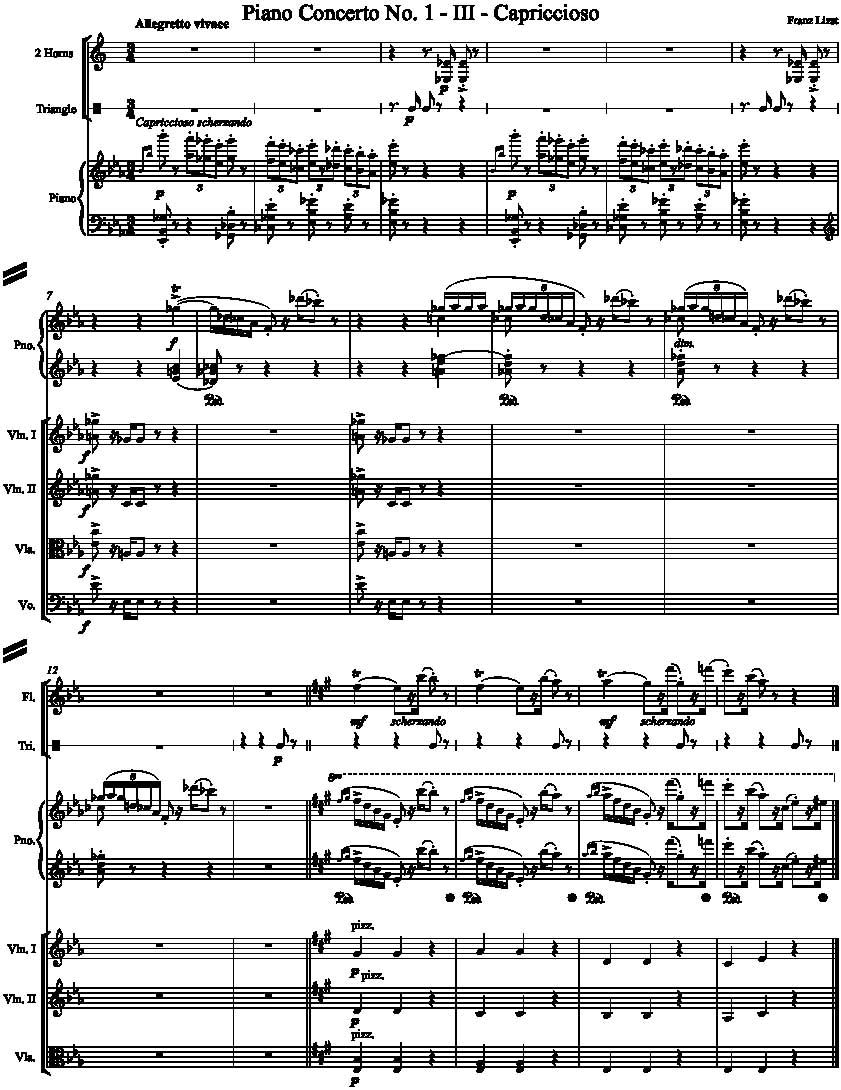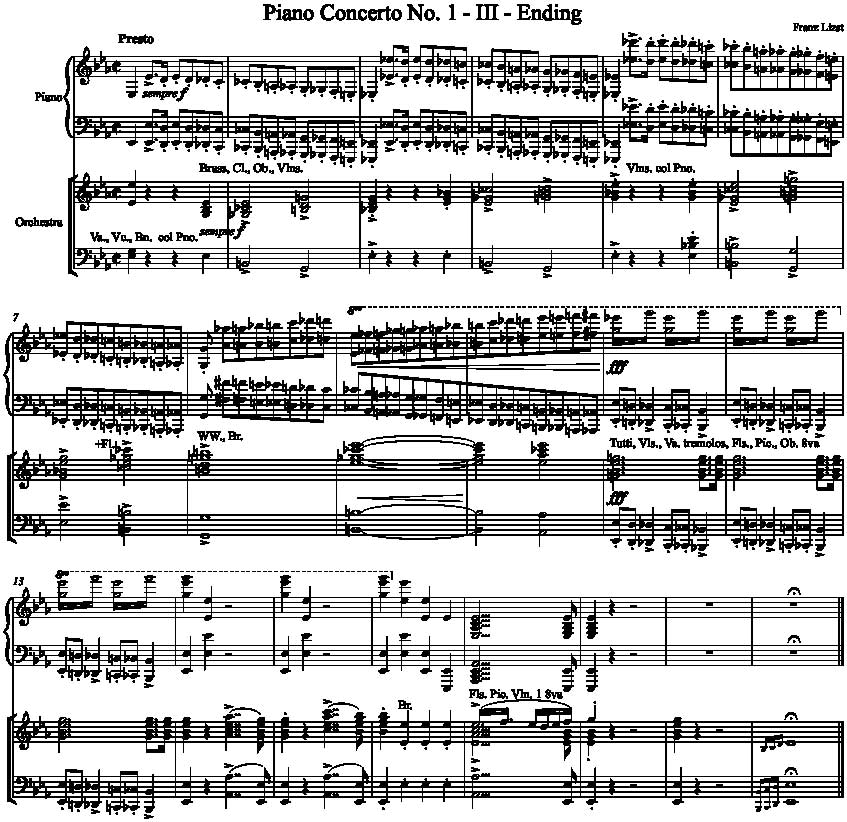
Piano Concerto No. 1 - Franz Lizst
Great Piano Concertos
 |
Piano Concerto No. 1 - Franz Lizst |
Great Piano Concertos |
Of all the Romantic Era piano concertos, Franz Lizst’s Concerto No. 1 in Eb has to sit at the pinnacle. An amazing technical feat for piano in its design and execution even today, it starts off right where Beethoven’s Emperor Concerto leaves us. After a four bar opening statement of the first motif rather than a lengthy exposition, a series of dramatic dominant seventh chords in the piano and orchestra, interspersed with octave arpeggios in the piano, announce a series of flamboyant cadenzas and interludes that comprise the first movement. |
Use the player to hear the first excerpt while you follow the score: |
 |
After the first theme is stated and answered several times with cadenzas, the first movement turns into chamber music, with duets between a solo clarinet, violin, and the cello section. Two secondary themes are introduced in the process. Through a lot of the concerto’s slower passages, Lizst freely mixes 12/8 triplet rhythms with common time. Use the player to hear the second themes: |
|
Second Movement. After a brief introduction in the strings, the solo piano introduces another of the main themes for the concerto. Here it is a beautiful romantic theme, very fluid in its concept. Notice how the left hand accompaniment uses bowl arpeggios and how Lizst delays the deep bass note by an eighth note triplet rest. This creates even more of a rubato feeling during the passage. Eventually this theme will reappear in the last movement as the ending theme, harmonized with a plagal cadence to give it more finality. Click on the player to listen to the score excerpt: |
|
Lizst uses all of his themes several times throughout the four movements of the concerto. Although the recordings always describe it as having three movements, Lizst really follows symphony form rather than concerto format. The second movement consists of the romantic slow movement above and the third is a scherzo movement in three four time shown below.This final theme theme is first introduced by solo woodwinds at the end of the second movement. You can see that he loved long trills and stretched out left hand arpeggios. Click on the player to hear the final theme: |
 |
The third movement has the famous triangle part that he was at first criticized for. But it is a great touch to the showy passages you see here in the upper registers of the piano. Lizst loved writing in the treble range. The Hungarian Rhapsody No. 2 has the same kind of passages. Click here to listen to the excerpt: |
 |
Not only was Lizst capable of exciting and attention grabbing beginnings to his works, but he really knew how to ramp up the drama and excitement for his endings. In this piece, he uses double octave chromatic scale passages in the piano at very fast speeds accompanied by building chords in the orchestra for his codas. This occurs several times in the work. Notice how he cleverly combines chords from B or C flat major with Eb major for the final coda. And at the very end, he has his signature plagal cadence to finish. Click here to listen to the conclusion: |
 |
Lizst’s Piano Concerto No. 1 is a great example of why the piano concerto is a mainstay of every orchestra’s concert programming, and why the combination of piano and orchestra is so popular among audiences. |